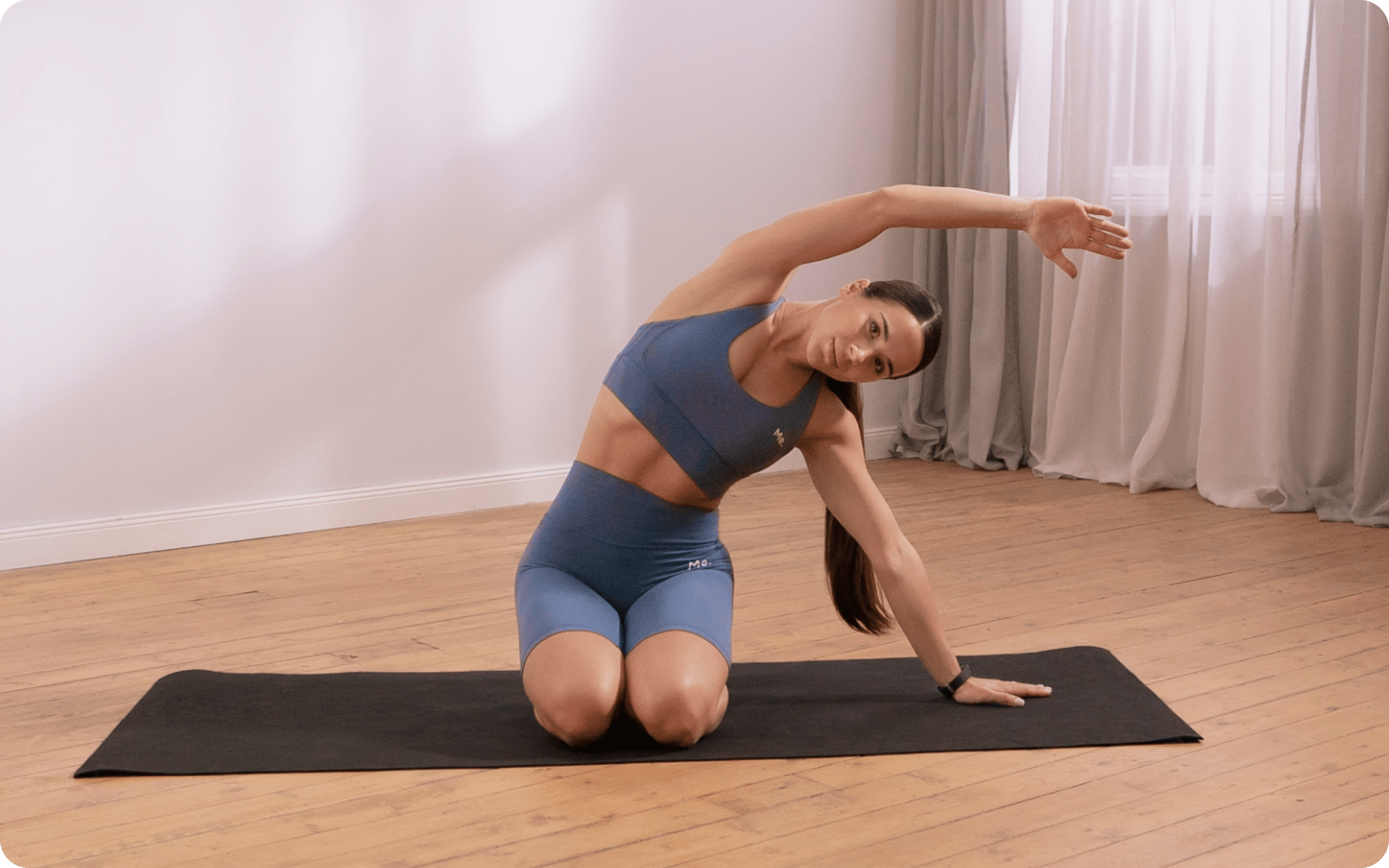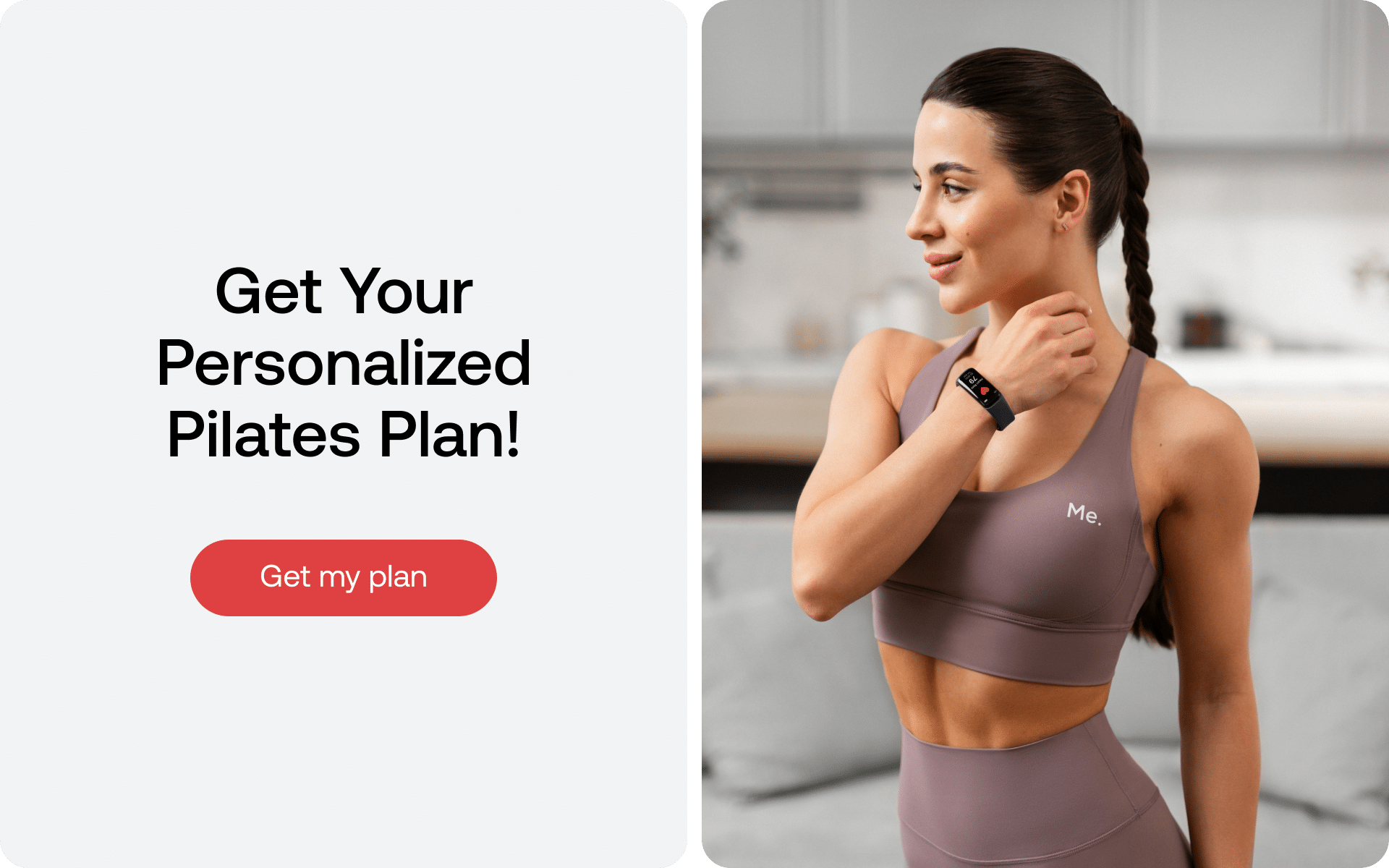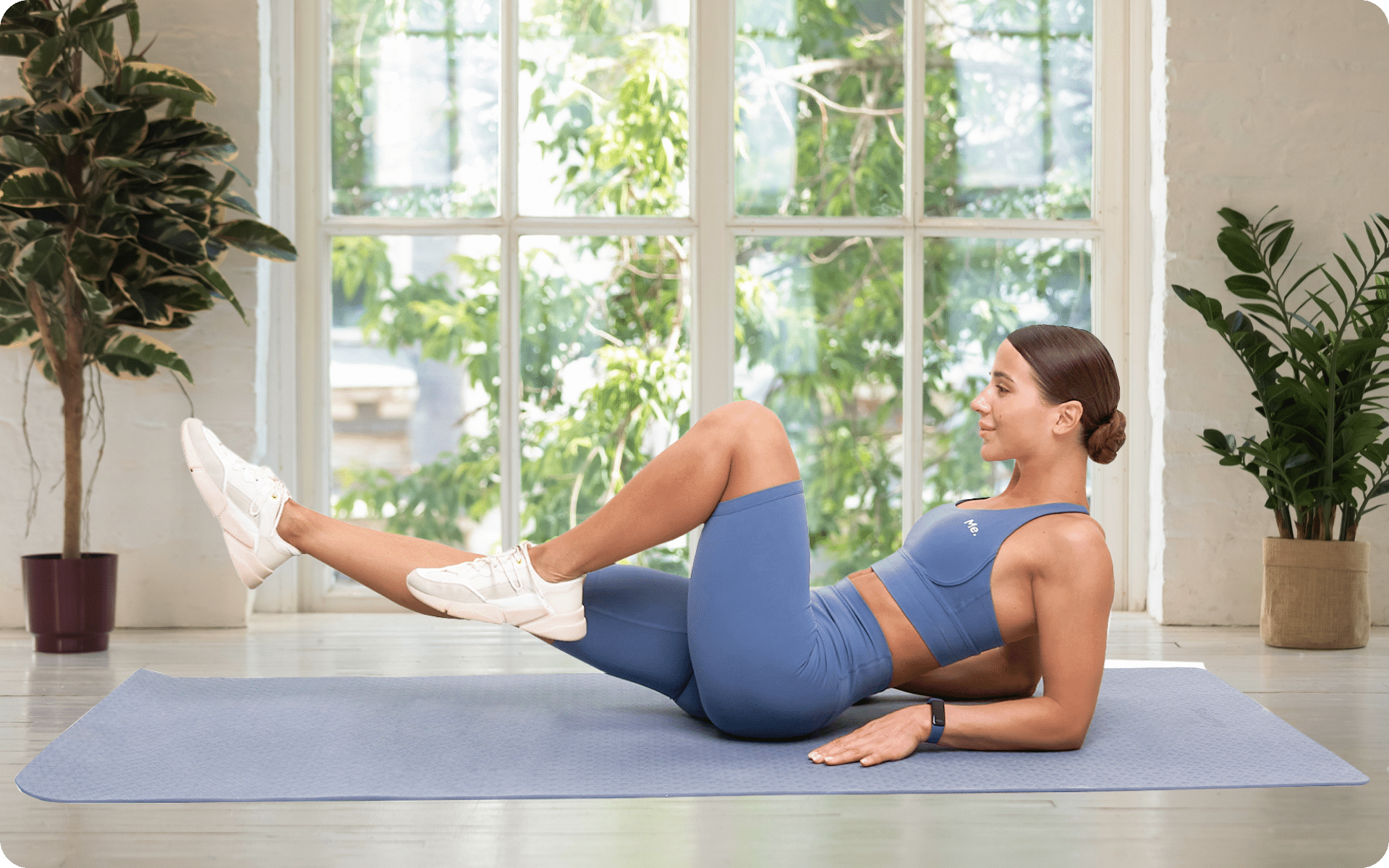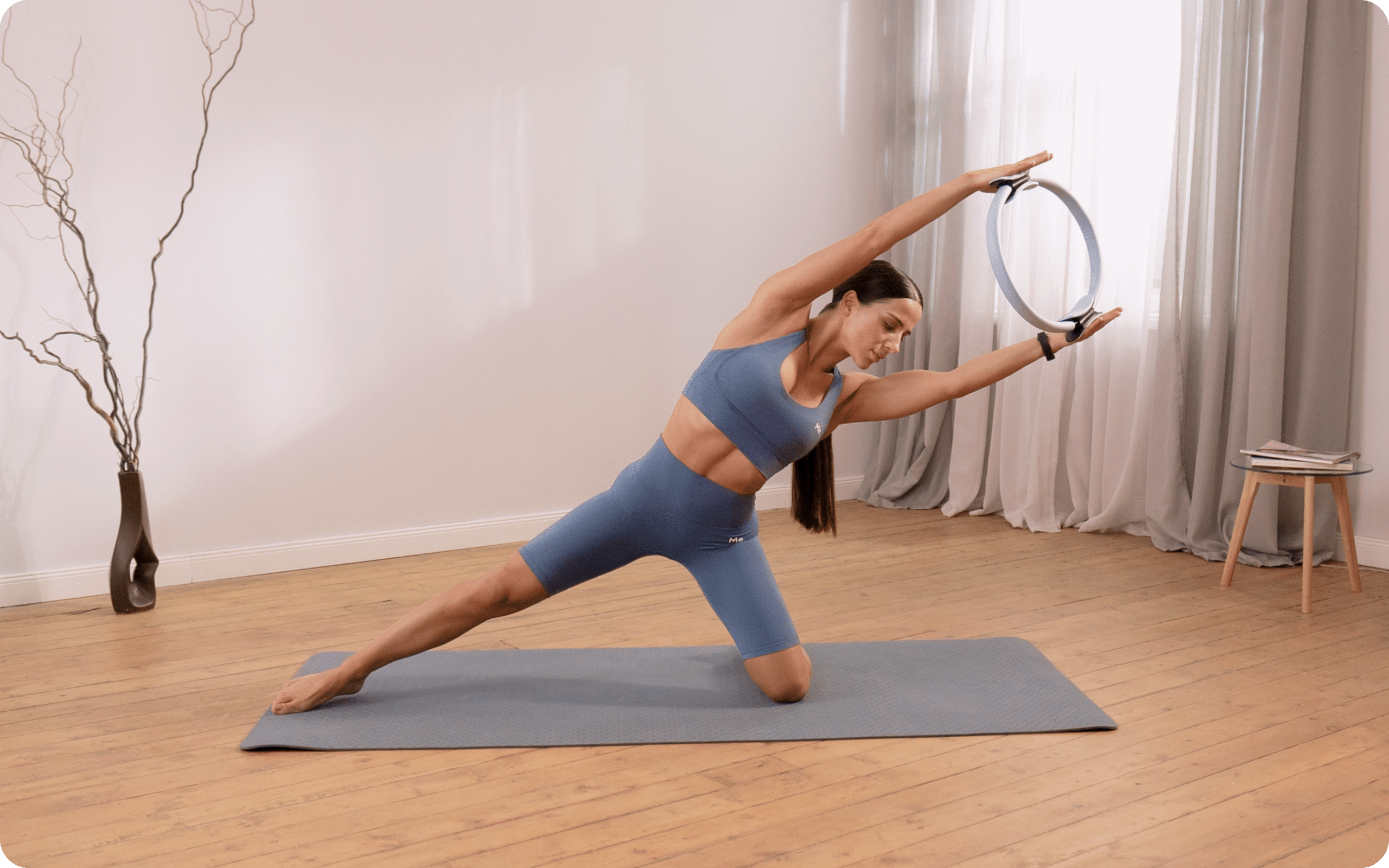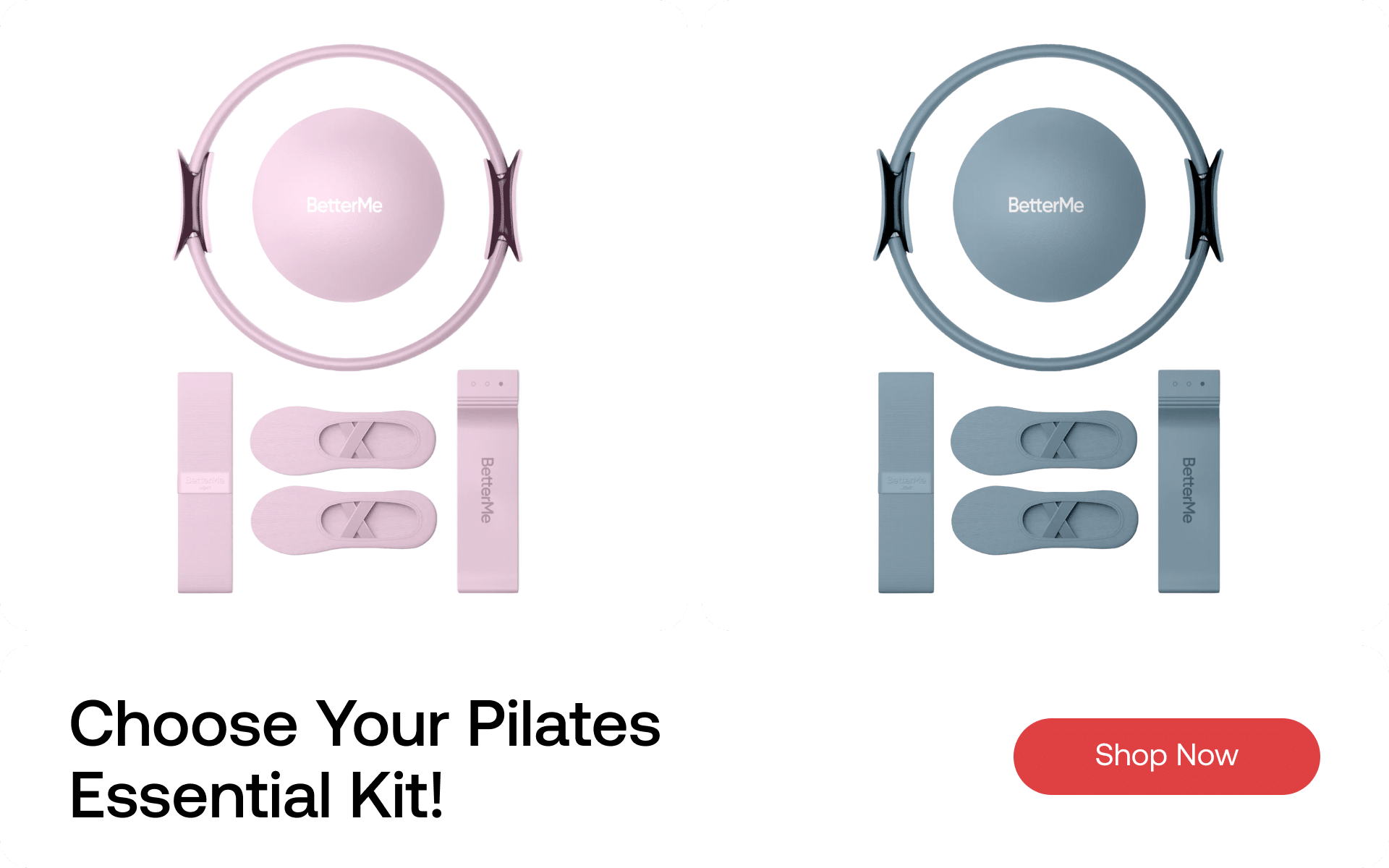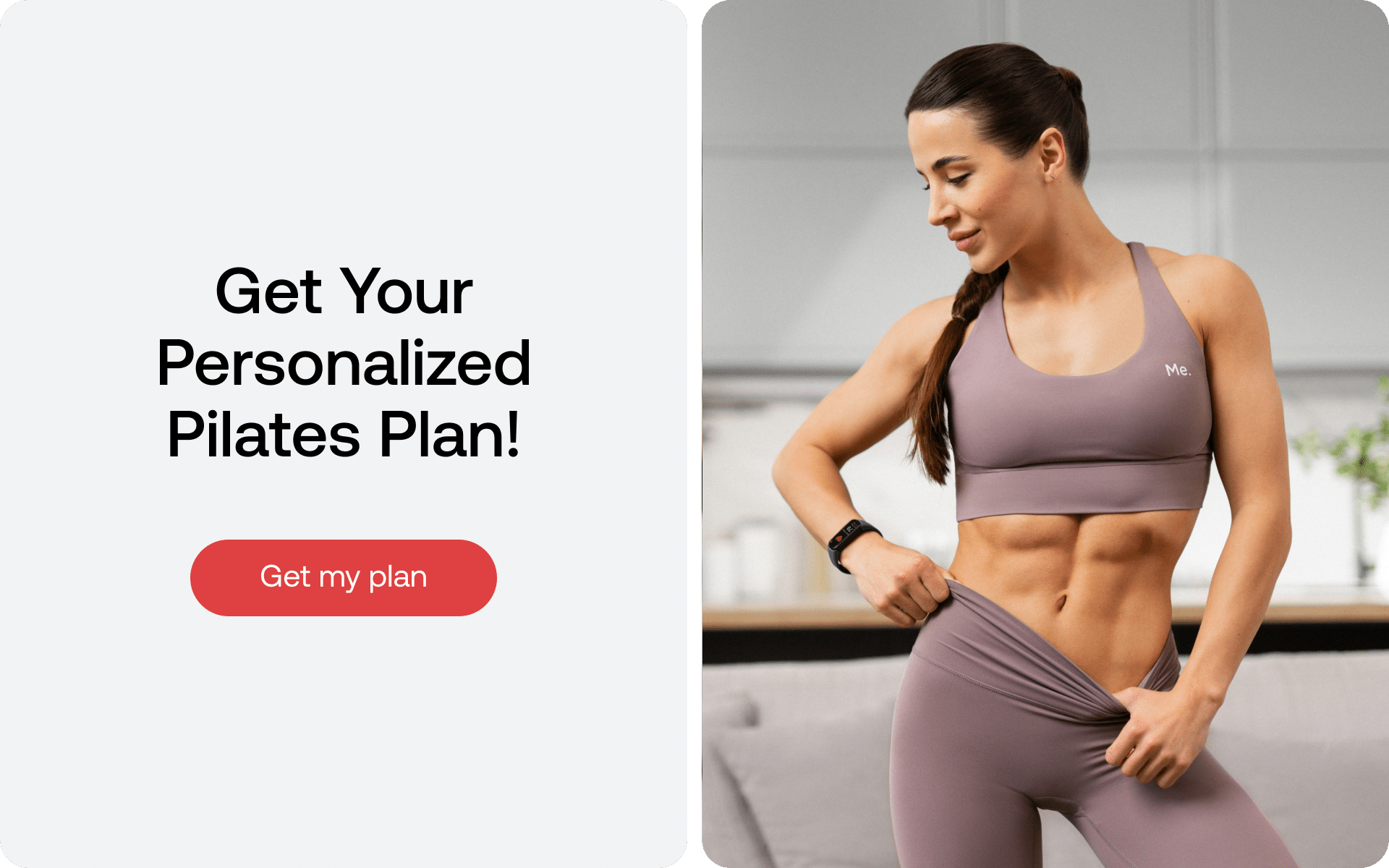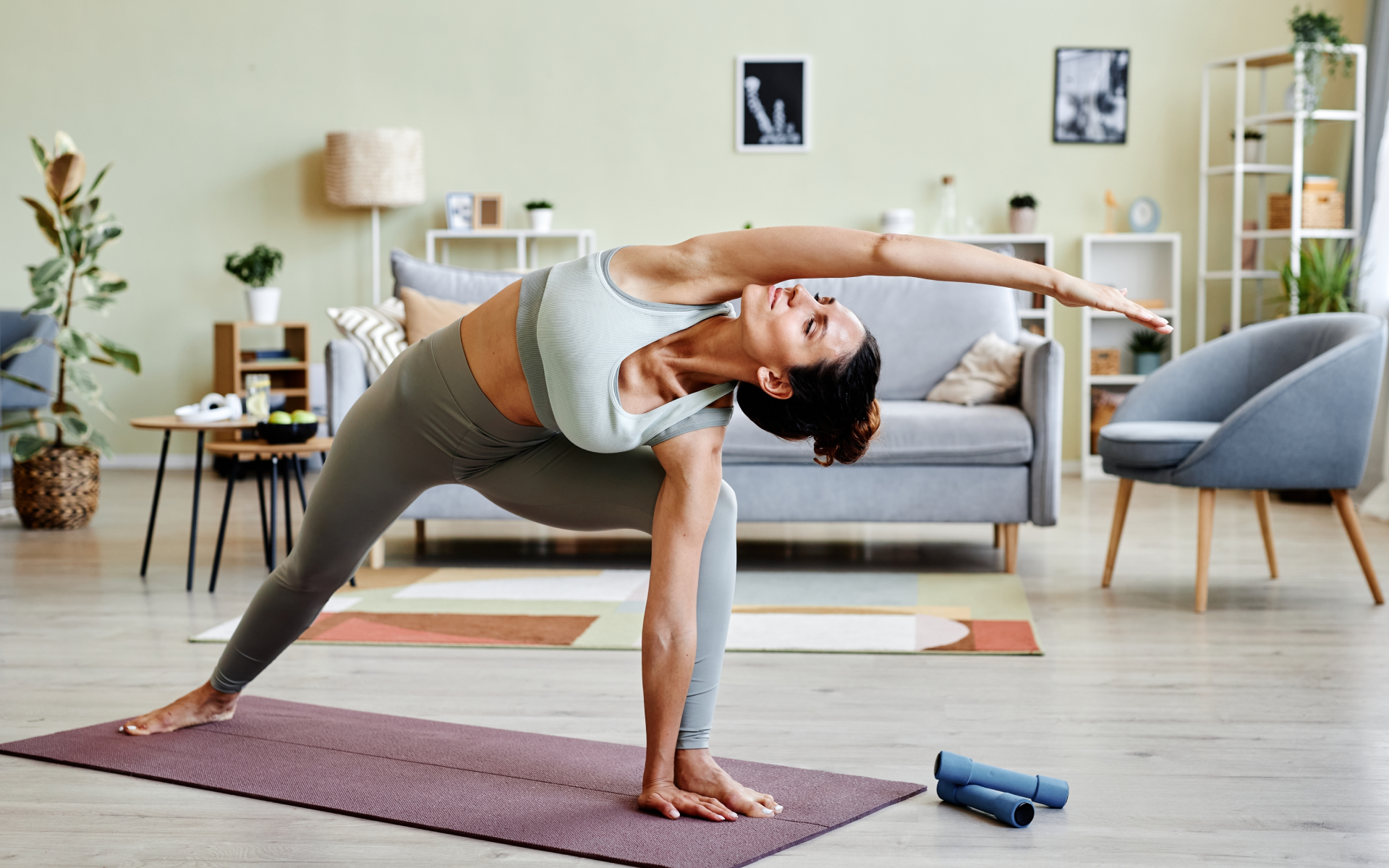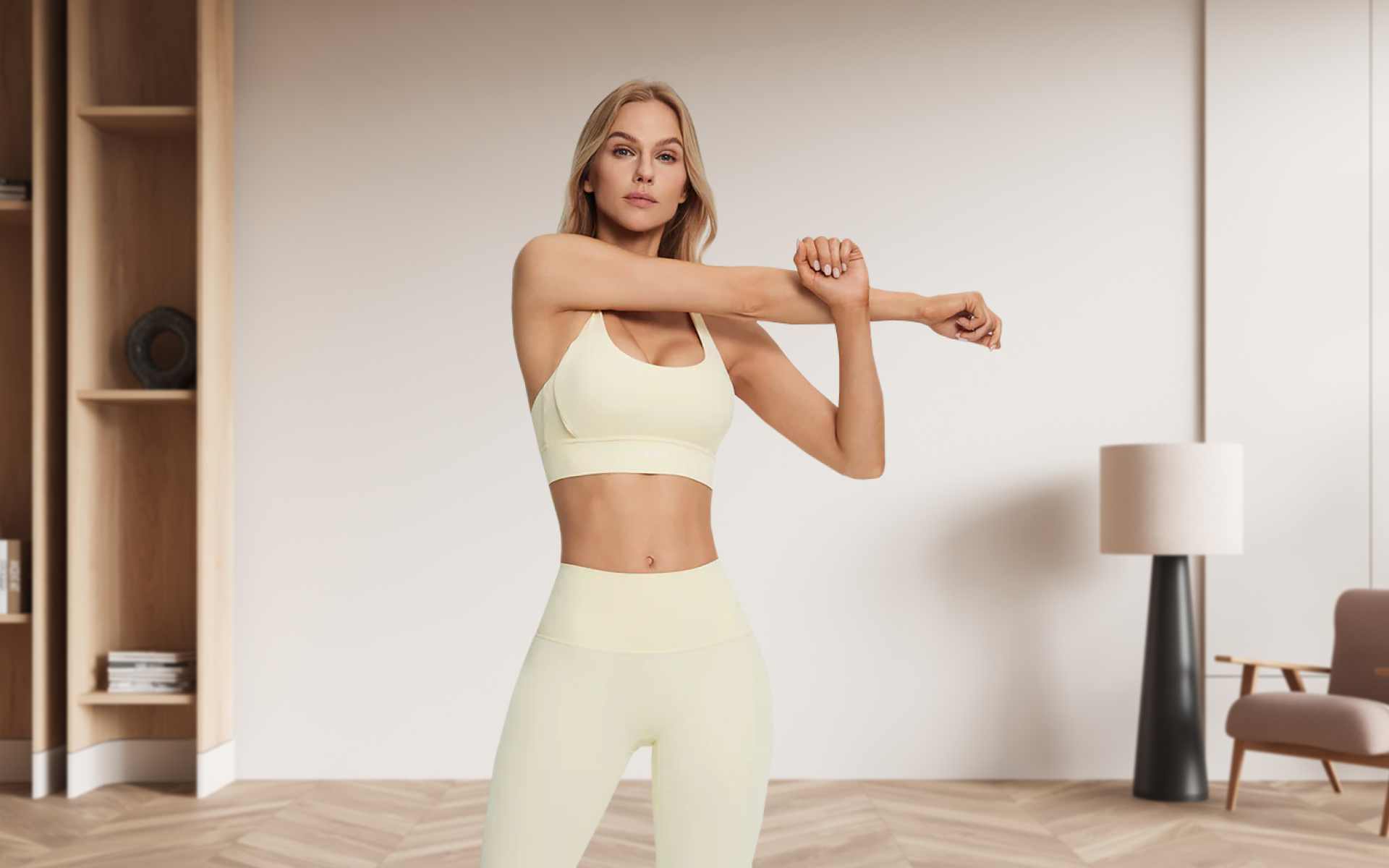A strong core is synonymous with a strong body. If your core is weak, that can lead to injuries and pain in your back, hips, and knees. A strong core will help you run faster, jump higher, and be more agile. Pilates exercises are a great way to tone your core at home with little to no equipment. The founder of this exercise system, Joseph Pilates, was ahead of his time. He believed that our modern lifestyles, which revolve around sitting at desks and staring at screens, were wreaking havoc on our posture and alignment (3). Over time, this lifestyle can lead to a whole host of problems, including back pain, rounded shoulders, and tight hips (1). Pilates is a great way to counter these effects of modern living. The exercises are designed to lengthen and strengthen your muscles, improve your posture, and increase your flexibility (2). And the best part is, you can do them at home with little to no equipment.
Here are some of the best Pilates exercises to tone your core:
Lateral Breathing
Also called lateral thoracic breathing or intercostal breathing, this exercise helps open up your chest and improve your posture. It involves drawing breath upward out of the lower belly and redirecting it laterally through the ribs.
To perform this exercise:
- Sit comfortably with your spine tall and your shoulders down. You may also want to lie down on your back.
- Place your hand on the sides of your body around your ribs.
- As you inhale, allow your breath to move laterally through your ribs and expand your hand out to the side.
- Exhale fully and repeat.
To add difficulty, perform this exercise in a tabletop position. This means that your back is parallel to the ground and your hips are in the air, supported by your forearms and toes.
This position engages your abdominals more than sitting or lying down, so it will be more challenging.
The Hundred
This is a classic Pilates exercise that helps to tone your abs and improve your breathing. It gets its name from the fact that you perform 100 repetitions (or 10 sets of 10).
To perform this exercise:
- Lie down on your back with your legs in the air and your knees bent to 90 degrees. Place your hands on your hips.
- As you inhale, lift your head and shoulders off the ground and pump your arms up and down 6 to 10 times.
- Exhale and hold your abs in as you lift your legs up to the ceiling, keeping your knees bent to 90 degrees.
- Pulse your arms up and down another 6 to 10 times.
- Repeat for a total of 10 sets.
Read More: When To Start Doing Wall Pilates: You’re Never Too Old (Or Too Young) For This Gentle Workout
Single-Leg Circles
This exercise helps to tone your abs and inner thighs. It also improves your balance and coordination.
To perform this exercise:
- Lie down on your back with both legs in the air and your knees bent to 90 degrees.
- Extend one leg out to the side and begin tracing small circles in the air with your foot.
- As you circle, keep your low back pressed firmly into the mat and your abs pulled in tight.
- After 10 circles, switch directions.
- Complete 10 sets on each leg.
Leg Lifts
This simple Pilates move targets the transverse abdominis (the set of deep-lying abs that help to stabilize the spine).
To perform this exercise:
- Lie down on your back with both legs in the air and your knees bent to 90 degrees.
- Keeping your abs pulled in tight, slowly lower one leg toward the ground.
- Stop when your leg is a few inches above the ground and hold for a count of two.
- Lift your leg back up to the starting position and repeat.
- Complete 10 sets on each leg.
Scissor Kicks
This Pilates move targets the rectus abdominis (the “six-pack” muscles). It also helps to improve your balance and coordination.
To perform this exercise:
- Lie down on your back with both legs in the air and your knees bent to 90 degrees.
- Slowly lower one leg toward the ground, keeping the other leg in the air.
- Stop when your leg is a few inches from the ground and hold for a count of two.
- Switch legs and repeat.
- Complete 10 sets on each leg.
Pilates Roll-Up
This exercise helps to tone your abs and improve your flexibility.
To perform this exercise:
- Lie down on your back with your legs in the air and your knees bent to 90 degrees.
- Keeping your abs pulled in tight, slowly roll up to a seated position, one vertebra at a time.
- Once you’re in a seated position, slowly roll back down to the starting position.
- Complete 10 sets.
Pilates Saw
This exercise helps to tone your abs, obliques, and shoulders. It also improves your flexibility.
To perform this exercise:
- Sit on the ground with your legs extended out in front of you and your arms extended overhead.
- Keeping your abs pulled in tight, slowly lean to one side, reaching your arm toward the ground.
- Stop when your arm is a few inches from the ground and hold for a count of two.
- Switch sides and repeat.
- Complete 10 sets on each side.
If you wish to free yourself from all the extra pounds that have been weighting you down for way too long, start using the BetterMe app and overhaul your entire life!
Pilates Side Bend
This exercise helps to tone your abs and obliques. It also improves your flexibility.
To perform this exercise:
- Sit on the ground with your legs extended out in front of you and your arms extended overhead.
- Keeping your abs pulled in tight, slowly lean to one side, reaching your arm toward the ground.
- Stop when your arm is a few inches from the ground and hold for a count of two.
- Switch sides and repeat.
- Complete 10 sets on each side.
Pilates Twist
This exercise helps to tone your abs and obliques. The twisting motion is especially beneficial for the lower abs.
To perform this exercise:
- Sit on the ground with your knees bent and your feet flat on the ground.
- Extend your arms out to the sides at shoulder level.
- Keeping your abs pulled in tight, slowly twist to one side, reaching your arms toward the ground.
- Stop when your arms are a few inches from the ground and hold for a count of two.
- Switch sides and repeat.
- Complete 10 sets on each side.
Pilates V Sit
This exercise helps to tone your abs and improve your balance.
To perform this exercise:
- Sit on the ground with your knees bent and your feet flat on the ground.
- Extend your arms out to the sides at shoulder level.
- Keeping your abs pulled in tight, slowly lean back a few inches, keeping your back straight.
- Once you’re leaning back, lift your feet off the ground and extend your legs out in front of you.
- Stop when your legs are parallel to the ground and hold for a count of two.
- Slowly lower your feet back to the starting position and repeat.
- Complete 10 sets.
Tips For Getting The Most Out Of Your Pilates Exercises At Home
To get the most out of your pilates exercises at home, keep the 7 principles of Pilates in mind:
Control
Control is a core principle of Pilates. All movements should be done with control and precision. This means moving slowly and deliberately, using your muscles to control the movement, rather than letting momentum carry you through the exercise.
Read More: Wall Pilates FAQ: Answers From The Experts
Centering
Centering refers to engaging your core muscles and maintaining good posture throughout the exercise. This helps to protect your back and prevent injury. It’s also why Pilates exercises are super effective at toning your abs!
If you’re struggling to center yourself, focus on keeping your navel pulled in toward your spine throughout the exercise. A better way to think of it is to “hollow out” your abs. This will help engage your deep abdominal muscles.
Breath
Breath is important in Pilates for a few reasons. First, it helps you control the movements. Second, it helps to prevent injury by stabilizing your core. And finally, it helps you relax and de-stress.
When you’re exhaling, really focus on pushing all the air out of your lungs. This will help you engage your deep abdominal muscles and stabilize your spine.
Flow
Flow refers to the continuous, smooth movements in Pilates. There should be no jerking or bouncing – all movements should be controlled and fluid. Think of it like a dance.
Precision
Precision means doing the exercises correctly and with proper form. For Pilates, proper form involves:
- Lengthening your spine
- Tucking your pelvis under
- Pulling your navel toward your spine
- Keep your chin level with the horizon
- Gaze forward
Yanking yourself back in shape has never been so easy with our game-changing fitness app! Start transforming your life with BetterMe!
Concentration
Concentration is important in Pilates because it helps you focus on the movements and connect your mind and body. When you’re concentrating, you should be focused on the muscles you’re working and the movement you’re doing.
A mind-muscle connection is simply when you focus on the muscle you’re working while you’re doing the exercise. This helps to ensure that you’re engaging the right muscles and getting the most out of the exercise.
Coordination
Coordination is key in Pilates. The exercises often involve moving different parts of your body at the same time, so it’s important to be able to coordinate those movements.
A good way to improve your coordination is to practice the exercises slowly at first. Once you have the hang of the movements, you can start increasing your speed.
The Bottom Line
Pilates is a great way to tone your abs and improve your overall fitness level. These 10 Pilates exercises are a great place to start. Remember to focus on your form and breath, and consistently challenge yourself to improve.
DISCLAIMER:
This article is intended for general informational purposes only and does not serve to address individual circumstances. It is not a substitute for professional advice or help and should not be relied on for making any kind of decision-making. Any action taken as a direct or indirect result of the information in this article is entirely at your own risk and is your sole responsibility.
BetterMe, its content staff, and its medical advisors accept no responsibility for inaccuracies, errors, misstatements, inconsistencies, or omissions and specifically disclaim any liability, loss or risk, personal, professional or otherwise, which may be incurred as a consequence, directly or indirectly, of the use and/or application of any content.
You should always seek the advice of your physician or other qualified health provider with any questions you may have regarding a medical condition or your specific situation. Never disregard professional medical advice or delay seeking it because of BetterMe content. If you suspect or think you may have a medical emergency, call your doctor.
SOURCES:
- Low back pain and its relationship with sitting behaviour among sedentary office workers (2019, sciencedirect.com)
- Pilates: how does it work and who needs it? (2011, nih.gov)
- The History of Pilates (n.d., pilatesfoundation.com)
